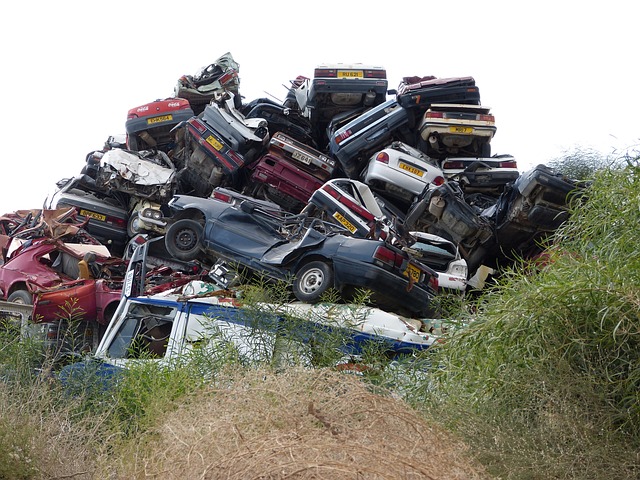
After arriving at a scrap yard, your car will go through the depollution process, then it will be crushed ready for the materials to be recycled. To learn more about what happens to scrapped cars, read on!
There are many reasons to scrap your car. It might be written off by your insurer, or it may just reach the end of its useful lifespan. Whatever the reason, one question remains: where do scrapped cars end up?
What happens to scrapped cars?
Once you’ve decided to scrap your car, it should be taken to your nearest Authorised Treatment Facility (ATF), or they may be able to pick it up. Let's take a look at what happens next...
Step 1: Depollution
When your car arrives at the scrap yard, the first thing that will happen is the ‘depollution’ process.
This involves stripping the car of all its hazardous materials, such as the battery and fuel tank. These will then be taken away and recycled in specialised processes designed for them. If it still has enough charge left (80% or more), a lithium-ion battery can serve a second life storing electricity in the National Grid. If it has no charge, it can be put through a shredder, making it easier to sift through components. Alternatively, a car battery can be frozen in liquid nitrogen to prevent any reaction from the remaining charge, and then shattered to neutralise it.
All fluids remaining in the car have to be siphoned out and disposed of. This includes fuel, coolants, oil, and anti-freeze, as well as any components within the car that have come into contact with the liquids. This is true even for electric vehicles, which don’t have fuel but still use brake fluid, coolant, and windshield washing fluid.
The tyres are also removed, and then shredded in order to be recycled. A tyre fire is awful for the environment, so recycling tyres is preferable if they cannot be reused on a newer car.
Any specific parts that are in good enough condition to be reused will be salvaged and sold on. Most scrap companies will also take out the glass from the windows and windscreen, as this can easily be recycled separately to the rest of the vehicle.
Electric vehicles can be recycled, but require extra care. The lithium-ion battery is very reactive, and can be explosive when exposed to air and water.
Step 2: Crushing your car
Next, after your car has been stripped of anything hazardous or salvageable, it is crushed.
A really large magnet, or a large claw, picks the car up and puts it in a crusher. It is then compressed in several directions until it becomes a compact cube. That cube is then shredded into smaller chunks, some of which are small enough to fit into the palm of your hand.
These chunks are fed into a separator, where the metal and plastics are separated out for recycling. The metal is then fed through a magnet that separates the ferrous metal from the non-ferrous metal – that is, all the metals that contain iron are separated out from the ones that don’t.
The non-ferrous metals are then put into a heavy media separator filled with molten fluid. In this separator, the metals will float at different levels, and are then taken away to be reused accordingly.
Step 3: Recycle your car
Finally, some of your scrapped car will be recycled!
Because scrap metal can be recycled almost endlessly, the likelihood is that your car could end up as anything, from a set of cans to a children’s swing set. It could even become a brand-new car. Recycling the metal takes much less energy than creating new metal from ore, and also stops the car from going to landfill.
Other parts of your car can also be recycled, including the catalytic converter, plastic from the dashboard, and fabric from the seats. So, if you’re particularly eco-conscious, scrapping your car is great for the environment.
Here at A&L Vehicle Recycling, we will buy virtually any vehicle in any condition. We are a fully licensed Authorised Treatment Facility, and we are committed to responsible recycling. Get in touch today for a free quote.
Scrap Your Vehicle
